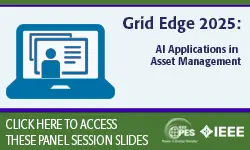Leveraging Wearable Microsystems for Point-of-Care Medicine
Ralph Etienne-Cummings
-
Members: FreeCAS
IEEE Members: Free
Non-members: FreeLength: 00:55:21
27 Jun 2023
Abstract: Bedside monitoring is routinely used to enhance the quality and safety of care in hospitalized patients. With a focus on non-invasive and contact-less measurement methods, clinicians have been able to access critical physiological characteristics of patients more quickly upon hospitalization and for longer periods of time. Non-invasive pulse oximetry monitoring, which became a standard in the patient care paradigm in the 1980s, has lowered retinopathy of prematurity (malformation of the eye) by as much 58% in severely underweight newborns. Other advancements such as piezoelectric bed inserts providing continuous heart and respiratory rates have been shown to increase early detection of respiratory failure and reduce cardiac arrests by 86% as compared to beds without these measurement capabilities. This improvement of bedside measurement tools has not equitably benefitted the patient population experiencing traumatic brain injuries. This has resulted in the standardized approach for these patients being primarily observational with few or no continuous assistive technologies to help inform clinicians of these patients’ neurological recovery during their stay.
Around 40% of patients suffering from a severe disorder of consciousness are misdiagnosed as a result of observation-based assessments. Even though these assessments are accepted as standard practice they are prone to errors of subjective perception, inter-observational error, and intra-observational error. Improper assessment can lead to improper care decisions and poor health outcomes. This can either result from an early withdrawal from treatment or from withholding rehabilitative treatment options during critical periods for recovery. Our research promises to offer an ongoing stream of information on patients’ neurological responsive development thereby closing this knowledge gap and allowing clinicians to provide treatment and guidance that is both ethical and accurate. In this talk, I will present how accelerometry data can be used to detect the levels of responsiveness, assessed by motor sub-score of the Glasgow Coma Scale (GCSm), and prediction of functional outcome at discharge, measured with the Glasgow Outcome Scale–Extended (GOSE) in critically ill patients with severe brain injuries. Further, I will present the next generation sensor suites that will allow more comprehensive analysis of neurological health using combinations of biomarkers and activity data through networked, distributed multi-sensor systems empowered by Artificial Intelligence. We hypothesize that such system will become ubiquitous as the monitoring and delivery of healthcare move away from the hospital and are embedded the community and homes.
Biography: Ralph Etienne-Cummings, an IEEE, AIMBE and ASI Fellow, received his B. Sc. in physics, 1988, from Lincoln University, Pennsylvania. He completed his M.S.E.E ('91). and Ph.D. ('94) in electrical engineering at the University of Pennsylvania. Dr. Etienne-Cummings is the Vice-Provost for Faculty Affairs, previous (7/2014 – 7/2020) Chairman of Department of Electrical and Computer Engineering and the Julian S. Smith Professor of Electrical Engineering at Johns Hopkins University (JHU). He was the founding Director of the Institute of Neuromorphic Engineering. He has served as Chairman of various IEEE Circuits and Systems (CAS) Technical Committees and was elected as a member of CAS Board of Governors. He also serves on numerous editorial boards and was the Deputy Editor in Chief for the IEEE Transactions on Biomedical Circuits and Systems. He is the recipient of the NSF’s Career and Office of Naval Research Young Investigator Program Awards, among many other recognition. He was a Visiting African Fellow at U. Cape Town, Fulbright Fellowship Grantee, Eminent Visiting Scholar at U. Western Sydney and has also won numerous publication and research awards. He was also recognized as a “ScienceMaker”, an African American history archive and for the “Indispensable Roles of African Americans at JHU” exhibit. In 2021 was elected to the Johns Hopkins Homewood Academic Council, which is the highest body responsible for maintain excellence in research, teaching and service at the University. He has published nearly 400 peer reviewed article, books/chapters and patents/applications on his work.


